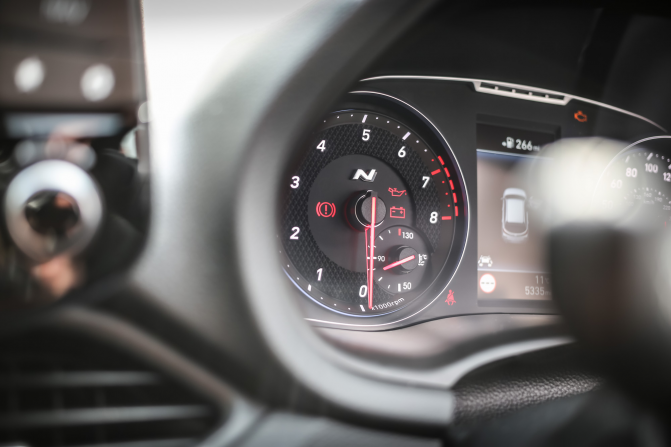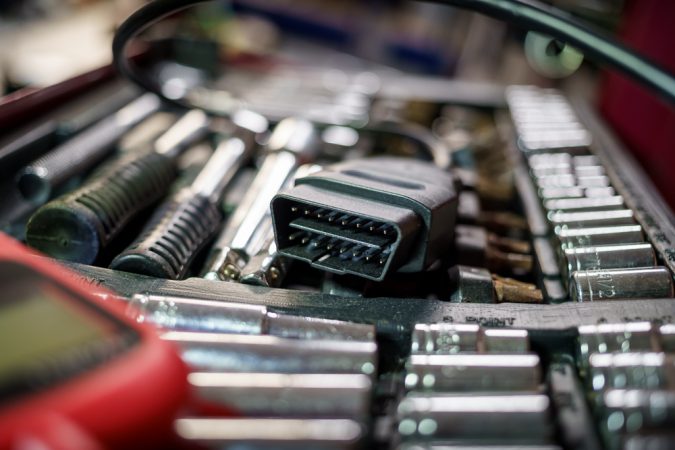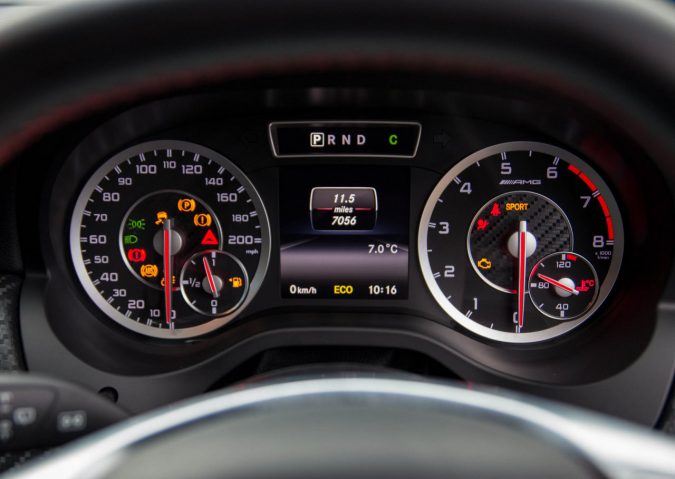With a car’s temperature gauge not working, there could be a number of issues for a driver. For example, the car could be overheating without the driver realizing it until it’s too late. The problem is that, unless you know specifically what is wrong with your gauge, it’s difficult to know the right steps to take to fix it.
The temperature gauge in your car is supposed to tell you the temperature of your engine. When it begins to get too hot, it should let you know that you need to pull over and cool off. However, if the temperature gauge has stopped working, it can be hard to tell whether or not your car needs a break.
The temperature gauge is a very important piece of equipment. It shows how cold or hot the engine is running, helping avoid any serious damage being done. It also alerts the driver if there is an issue with the cooling system or electrical system. Besides, it can be used as a warning sign for overheating or freezing of the water coolant mixture.
There are many reasons why this gauge would malfunction, which we will go through in detail in this article.
- How Does It Work?
- What Could Cause This?
- Not Working?
- Temperature Sending Unit
- What To Do?
- Fixing The Gauge
- Repair Cost
How Does The Temperature Gauge Work?
The temperature gauge in a car helps the driver know how hot their engine is, making it possible to assess the risk of the vehicle catching fire. The gauge has to be calibrated correctly, preferably in degrees Fahrenheit, to be suitable on an American car’s gauge.
It uses a sensor to measure the temperature of the coolant inside the radiator. It then displays this information on a dial or gauge, which normally ranges from cold to hot but can also be calibrated in degrees.
The thermometer inside the engine of the car reads the temperature of the coolant, which flows through pipes to keep the engine at an optimal temperature. As the coolant warms up, it will turn from blue to green to yellow, and finally red as it reaches its maximum heat range.
How To Know When Temperature Gauge Not Working?
The most obvious way to know the car temperature gauge not working is if it reads a temperature that exceeds the normal range of temperatures for a car. If this is the case, then there is a good chance that the gauge is defective.
If the gauge is defective, it will read that your engine is overheating even though in reality, it isn’t. It may display a reading outside of the normal range. If it doesn’t show any readings on the dashboard, it might not be working at all.
If the car’s temperature gauge is reading low, it could be that the coolant is running out and needs to be replaced. The coolant in many cars circulates through the engine and radiator to keep the vehicle at a desired operating temperature.
It could also be an issue with the thermostat or a faulty temperature sending unit. There could be a fault with the gauge, or it could probably be disconnected. The issue could also lie with the car computer or the circuits either in the sending unit or gauge.
On the other hand, if the temperature gauge is reading high, it may be due to the coolant running low or it becoming muddy. It could also be an issue with the radiator, either because the cap is loose or due to a blockage in the hose.
It is also possible that the temperature gauge alternates between high and low readings and seems to be erratic without any specific reason. This could be due to the presence of air bubbles in the cooling system or a clogged radiator. Other reasons could be a bad thermostat or gauge, loose wires, or corroded connector plugs.
In any of the above scenarios, you can assume that the temperature gauge not working.
What Could Cause a Defective Temperature Gauge?
There could be various reasons for the temperature gauge not working, and we will go through each of them one at a time:
1. Temperature Sending Unit
The temperature sending unit is located in the engine. The sending unit sends a message to the car’s computer about the temperature of the air coming out of your car’s air conditioner. When the temperature sending unit is defective, it does not send accurate information. This can cause your car’s temperature gauge to be inaccurate or show an incorrect reading.
Temperature gauges can be defective if there is a bad ground between the sending unit and the engine block. If the ground is not good, other sensors in the engine will also be affected by this issue because they are attached to the same wire. A good ground connection keeps electricity safe while it travels from the sensor to the gauge.
A car’s wiring issues between the sending unit and gauge may also cause it to be defective. When the sending unit is not working properly, the gauge will measure incorrect information. This, in turn, can lead to problems when diagnosing and fixing the problem.
It depends on whether or not there are any other symptoms that would indicate a problem with the wiring issue. It also depends on the severity of the wiring issue. If there are other symptoms like overheating or electrical malfunctions, then there might be an issue with the wiring, which may then need to be replaced.
2. Faulty Engine Coolant Temperature Sensor
A faulty engine coolant temperature sensor could cause the temperature gauge to be defective. If the sensor malfunctions, it could cause the car’s computer to display an inaccurate reading on the gauge. The car’s computer monitors by receiving information from the sensor and sending data back to it through electrical signals. So if an electrical signal is interrupted or not received at all, then it would show an inaccurate reading on the gauge.
Replacing a sensor is easy. An OBD2 scanner will show whether there are any temperature readings or not. If there are no readings, then proceed with replacing the sensor. First, drain the radiator after removing the cap. Then disconnect the sensor by removing the connector.
Replace the old sensor with a new one and reconnect it. Add coolant and close the lid to ensure that all openings are sealed. Once the engine has been started and has been running for a few minutes, check the temperature gauge. Drive the car and check the coolant level again. If the level has dropped, replenish the coolant.
3. Thermostat
It could also be an issue with the thermostat. Replacing the thermostat by yourself is not too difficult. Once the coolant temperature has dropped, drain the radiator and remove the thermostat. You may dip the thermostat in very hot water for a couple of minutes to check whether it is working.
Once you replace the thermostat, fill up the coolant and seal it shut. Drive the car for a few minutes, then check the coolant level and replenish if needed.
4. Temperature Gauge Electrical Unit
The temperature gauge’s electrical circuit is responsible for sending electrical signals to the display. A problem in the electrical circuit may cause the temperature gauge to be defective. For example, the wiring could have been bent, cut, or broken during the installation or maintenance of the vehicle.
The temperature gauge itself could have been damaged during the assembly process and not properly sealed from moisture. This would cause it to fail after a few years. Fluctuations in voltage can also cause a circuit malfunction.
5. Dash Cluster Module
The dash cluster module can cause the temperature gauge to be defective. A malfunctioning dash cluster module may cause the instrument panel to suddenly change. This is possible because the module controls the display of data on the gauge, which can affect how it functions.
For example, if a change in the engine’s voltage is causing the dash cluster to not work properly, this could also affect how well it displays information on the temperature gauge. Bad electronics are often the culprit, but human error can result in damage that requires a replacement of the dash cluster module.
6. Broken Wiring
Typically, broken wiring can cause the temperature gauge to be defective. This is because the wire will not carry the correct signal to make it read correctly. For example, if a wire is clipped, there is no signal flowing through it, and the gauge will not work properly.
Besides, a wire might break and short circuit, and end up touching another wire’s metal casing. In this case, the heat from the short circuit would cause the wiring to melt and damage the gauge.
7. Car Computer Control Unit
A car’s computer can control the engine, fuel, and other systems. If there is a fault in the car’s control circuit from the computer to the temperature gauge, the computer may report a false reading.
The computer can read different types of information about the car’s engine. This includes how many miles you’ve driven, the temperature of the engine, and what it is doing. It can easily tell if something is wrong with your car.
The computer can send messages to the gauges that tell them how to display what they are reading. If there is a problem with this circuit in your car’s computer, it might cause issues with the temperature gauge.
8. Air In Radiator Hoses
If an air pocket enters the radiator hose, it will cause a bubble that blocks some of the flow of air through the radiator. This would cause the car’s temperature gauge to become defective because it couldn’t measure how hot or cold the car was.
If the air entering the radiator hoses is restricted or not free-flowing, then there won’t be enough air to cool the engine. In such a case the temperature gauge will read higher than what’s actually happening. If a hose is clogged with mud and water, the engine will not be able to cool as efficiently as it should. This prevents the car from being able to obtain an accurate reading of its temperature.
9. Corrosion In Plug Connectors
A common cause of the temperature gauge in cars being defective is corrosion in plug connectors. Plug connectors are used to connect wires in a car. If the plug connectors are not properly sealed, water may get inside them and cause corrosion.
Corrosion can be caused by water getting into the connector. It can also be caused by well-meaning mechanics who don’t know that they should crimp terminals with side-cutters rather than pliers. There may be corrosion inside the body of the connector, where it’s not visible but still affects electrical flow. Corrosion can also cause wires to short out, which will lead to the car’s temperature gauge being defective.
10. Air In The Cooling System
The temperature gauge in a car can be defective if it is not protected from the outside air. Air in a car’s cooling system may cause the gauge to read erroneously high.
An air bubble in the cooling system can cause a defective gauge. If the pressure of the cooling system is lower than normal, it will cause a small crack in the radiator. This can allow air to enter, which results in the expansion of the cooling system. Eventually, the cooling system will be unable to maintain a constant temperature, causing hot spots on one side of the engine.
11. Broken Engine Control Unit
An engine control unit is a component that regulates the temperature in a car’s engine compartment. A broken unit can cause a car’s temperature gauge to become defective.
This is due to the possibility of there being a sensor malfunction in the engine control unit that would lead to faulty readings of temperature. The ECU (engine control unit) may not communicate with the sensor module, which can cause the vehicle’s temperature gauge to read inaccurately.
Besides, it may not be sending accurate readings to the internal temperature gauge. This can result in the driver not knowing the actual temperature of their car’s engine, which increases the risk to drivers.
What To Do When Temperature Gauge Not Working
You should inspect their vehicle’s engine while it is not in use. Check the temperature gauge to make sure it’s normal and not defective. If you see a sudden increase in RPMs, turn off the engine and get out of the car.
You may also check for a car’s defective temperature gauge by examining the instrument cluster. While examining the instrument cluster, look at the odometer and fuel level, visually inspect any warning lights, and use a flashlight to examine the gauges.
With On-board Diagnostics or OBD, you can check the car’s temperature gauge by reading the coolant temperature sensor. First, you need to locate the sensor and see what the temperature reads on the sensor when it’s not hot outside. Check again when it is hot outside when driving.
Additional Steps
You can also open the hood and check more thoroughly without the help of a mechanic. This will also help you figure out whether there is indeed a problem with the temperature gauge.
Once the car has run for a few minutes, the first step is to check the coolant level. The coolant should measure be up to the level that is marked as full. Replenish the coolant if it is low. Moreover, check for any muddiness or change in color of the coolant, which would indicate that it needs to be changed.
Another reason for overheating could be related to whether the radiator cooling fan is running or not. If it is not, then it will cause the engine to heat up. Also, check the radiator and ensure that the cap is closed tightly.
A hot radiator hose means that the radiator is functioning properly. If the hose is not hot, just warm or cold, it means that the engine must be hot due to a radiator issue. There could be a possibility that it could be blocked or connected to a faulty water pump.
You will also need to check your thermostat, which could be causing the issue. Also, check for any leakage of the coolant or a problem in its circulation.
Checking The Temperature Sending Unit
If you have ascertained that it is your temperature gauge that is not working, then you can proceed to check the temperature sending unit. Typically, the type of unit depends on the vehicle, as specified in the owner’s manual. Alternatively, you can also find the information with a simple Google search.
You will need to unplug the unit and check the resistance using a multimeter to see whether it is functioning normally. This should be done after the engine has been left running for a few minutes. You may confirm the readings with the details given in the manual.
What To Do In Case Of A Defective Temperature Gauge?
A defective temperature gauge is a cause for concern because you will be unaware of how hot or cold the engine and other parts are getting. At least one warning light on the dashboard usually signals this type of problem, but it does not always go off.
If you notice that your car is constantly overheating or constantly freezing, there is a good chance that the gauge is out of commission and needs to be replaced.
If the temperature gauge indicates a potentially overheating engine, it is important to turn off the A/C, open windows for ventilation, and turn on the car’s hazard lights. In addition, pull over to a safe place, stop driving, turn off the engine, and wait for the vehicle to cool down before driving again.
If the temperature gauge seems defective or is not registering any readings, then take the vehicle to a mechanic or a service station for an inspection.
If there is a need, get help to tow the car to a service center.
How Important Is It To Fix The Temperature Gauge?
Fixing the temperature gauge in a car is important even if the engine is running smoothly. There can be additional and unforeseen consequences because of faulty readings. It is a misconception that if the engine is running smoothly, it is not necessary to fix the temperature gauge.
A faulty gauge can lead to problems such as an overheated engine. When the gauge shows that the engine has reached its limit, it may be time to check for any clogs in the radiator or open water hoses. If you notice that your car’s temperature gauge constantly reads over ninety degrees while driving, it may be time to have your engine checked by a professional mechanic.
If there are any problems with the engine, you must know so you can get it fixed quickly. An overheated engine will not operate properly, and this could cause serious problems on the road.
Cost of Repair of a Temperature Gauge
The cost of repairing a car’s temperature gauge when your car temperature gauge not working can depend on many factors. This includes the make, model, type of vehicle, and rate of labor. However, on average, the cost of repairing a car’s temperature gauge is approximately $150–$200.
It is often not expensive to repair a car’s temperature gauge. A good mechanic should be able to determine the root of the problem with the help of some tools.
Any obstructions to the flow of coolant may need to be removed. It may also be needed to ensure that there are no leaks in or around the gauge itself. If that is the case, it might mean needing to replace an old sensor.
It will probably take less than an hour for this type of repair. The cost of repairing a malfunctioning temperature gauge will also depend on which part needs to be replaced and how damaged it is.
DIY Car Temperature Gauge Diagnosis and Fix: Facts
- A car’s engine temperature is vital for its operation, and a properly functioning temperature gauge is a window to its health.
- In modern cars, the temperature gauge helps the engine computer set a proper fuel-to-air mixture, essential for both fuel economy and engine longevity.
- A broken coolant temperature sensor (CTS) is the most common cause of faulty temperature readings, and a bad thermostat is the second most common fault that can damage an engine.
- Mechanics need gloves, long-sleeved shirts, masks or ventilators, and eye protection when working on a car.
- Mechanics must ensure that they work in a safe, flat workspace and organize their tools and gear to save time.
- To replace a faulty CTS, mechanics must drain the radiator, remove the old sensor, install the new one, and test the temperature gauge readings.
- To replace a faulty thermostat, mechanics must test and remove the old part, install a new one, and test the temperature gauge readings.
- Air in the coolant system can also cause a faulty temperature gauge, so mechanics must jack up the front of the car to remove the air from the hoses.
- If none of the above fixes the faulty temperature gauge, the instrument cluster itself could be faulty, and a professional diagnosis may be necessary.
- Radiators should be flushed every 30,000 miles or every third oil change for most modern cars to maintain optimal performance.
Conclusion
A car’s temperature gauge is a helpful device that can warn the driver of problems with the engine. If it seems like your car is overheating, there could be a problem with your car’s cooling system. There could be a ruptured hose or a clogged radiator. By monitoring the needle on your temperature gauge and pulling over when necessary, you can prevent any damage to your vehicle’s engine.
It is very important with your car temperature gauge not working to fix it as soon as possible. A broken or inaccurate gauge may fail to alert the driver of an imminent problem and can cause more significant damage to the engine.
With your car’s temperature gauge not working, it can cause the driver to be taken by surprise if the engine overheats and stalls. The gauge may not be working for a variety of reasons as given above. Luckily, most of the issues can be fixed easily by a good mechanic or service center without incurring heavy expenses.




